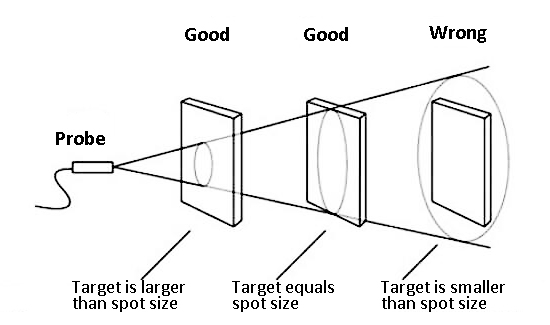How to Install a Temperature Sensor?
Temperature sensors play a key role in a variety of industrial, commercial, and domestic applications for monitoring and controlling temperature. Whether they are used for greenhouse management, weather stations, water heater control, or industrial process control, the correct installation of temperature sensors is critical to obtaining accurate temperature data. ATO online shop will detail the process of installing temperature sensors to ensure reliable and accurate temperature measurements.
Preparation
Before you begin installing a temperature sensor, you first need to select the type of sensor that is appropriate for your specific application. Different applications may require different types of temperature sensors, such as thermistors, thermocouples, infrared temperature sensors, etc.
- Mounting Location: Determine where the temperature sensor will be mounted. This should be a location that accurately reflects the desired temperature information.
- Application Environment: Consider the environment in which the temperature sensor will be installed, such as indoor, outdoor, high temperature, low temperature, etc.
- Temperature Range: Determine the temperature range that needs to be measured to ensure that the temperature sensor selected can cover this range.
- Accuracy Requirements: Different types of temperature sensors have different accuracies. Select the appropriate accuracy level according to the needs of the application.
- Response Time: Some applications require a fast temperature sensor response, while others may not require as high a response time.
- Physical Dimensions: Consider the size of the temperature sensor to ensure it fits in the installation space.
- Safety Measures: Ensure that appropriate safety measures are taken during installation, such as wearing protective eyewear, gloves, and suitable work clothing.
- Tools and Materials: Prepare the required tools and materials such as screwdrivers, wrenches, cables, connectors, and cable clamps.
- Technical Specifications: Familiarize yourself with the technical specifications and installation requirements of the selected temperature sensor. This information is usually included in the sensor's user manual.
Installation
Clean the mounting location: Make sure the mounting location is clean and free of debris or dirt that could affect the performance of the temperature sensor.
- Check Environmental Conditions: Make sure that the environmental conditions at the mounting location match the specifications of the selected temperature sensor. For example, if the installation is outdoors, water and sun protection needs to be provided.
- Direct Contact: Some temperature sensors need to be in direct contact with the surface of the object to be measured, e.g. affixed to a pipe or inserted into a liquid.
- Non-contact: Some temperature sensors, such as a good infrared temperature sensors, enable temperature measurement without direct contact with the object to be measured. Select the appropriate mounting method according to the application requirements.

Secure the temperature sensor in the chosen location using appropriate tools. Ensure that the temperature sensor is firmly fixed and will not be disturbed by vibration or wind.
If direct contact with the object to be measured is required, ensure that the contact surface of the temperature sensor is in full contact with the surface of the object to ensure accurate temperature measurement.
Connect the cables or wires according to the temperature sensor installation guide. After installation is complete, calibrate the temperature sensor. This can be accomplished by comparing it to a known temperature standard. Calibration ensures that the temperature data output from the temperature sensor is accurate. Depending on the environment and application requirements of the temperature sensor, it may be necessary to add additional protection such as a waterproof cover, protective sleeve, or insulation.
Connections
- Connecting Cables: Use the correct type and gauge of cable to connect the temperature sensor according to the requirements of the temperature sensor and the data acquisition device. Ensure that the cables are securely connected and that there are no shorts or breaks.
- Connectors Header or Connectors: If the temperature sensor has connectors or connectors, make sure that it is correctly plugged into the socket of the data acquisition device or control system. Make sure that the pins of the connector or header correspond correctly.
- Electrical Connections: For some temperature sensor types, such as thermistors, additional circuit connections may be required to convert the temperature sensor output signal into readable temperature data. Ensure that the electrical connections are correct to prevent misreading or damage to the temperature sensor.

Testing and Verification
After installation, testing and verification must be performed to ensure that the temperature sensor is functioning properly. Use a data acquisition device or control system to monitor the output of the temperature sensor. Ensure that the temperature sensor produces accurate temperature data. If the temperature sensor requires calibration, perform an accuracy check to verify the accuracy of the temperature data. Recalibrate as necessary. For long-term applications, perform stability tests to ensure that the temperature sensor's performance does not drift significantly over time. Test the sensor's performance under different environmental conditions to ensure that it can cope with various application scenarios.
At high temperatures, such as a layer of soot on the protective tube, or dust attached to it, the thermal resistance increases, hindering the conduction of heat, the temperature is lower than the true value of the measured temperature. Therefore, the excellent thermocouple protection tube should be kept clean to minimize the error. Installing a temperature sensor is a critical step in ensuring accurate temperature measurement. Selecting the right type of temperature sensor, installing it correctly, and performing proper testing and maintenance are critical for a variety of applications. Following the steps in this guide will ensure that your temperature sensor will provide reliable temperature data over the long term for your application.

